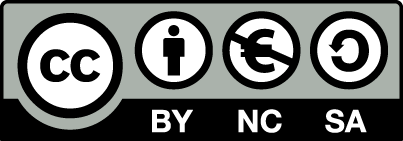Please use this identifier to cite or link to this item:
https://hdl.handle.net/2445/173647| Title: | Nutrición parenteral domiciliaria en España 2018. Informe del Grupo de Nutrición Artificial Domiciliaria y Ambulatoria NADYA |
| Author: | Wanden-Berghe, Carmina Cuerda Compes, Cristina Maíz Jiménez, María Pereira Cunill, José Luis Ramos Boluda, Esther Gómez Candela, Carmen Virgili, Núria Burgos Peláez, Rosa Luis Roman, Daniel A. de Penacho Lázaro, María Ángeles Sánchez Martos, Eva Ángeles Martínez Faedo, Ceferino Díaz Guardiola, Patricia Álvarez Hernández, Julia Zugasti Murillo, Ana Martín, Cristina Campos Sanz Paris, Alejandro Martín Fontalba, María de los Ángeles Lobo Támer, Gabriela Matía Martín, Pilar Carabaña Pérez, Fátima Martín Folgueras, Tomás Martín Palmero, M.ª Ángela Luengo Pérez, Luis Miguel Sánchez Vilar-Burdiel, Olga Martínez Costa, Cecilia Tejera, Cristina Martínez Ramírez, María José García Delgado, Yaiza Ponce González, Miguel Ángel Roca, Sílvia Mauri García Zafra, María Victoria Germán Díaz, Marta Gabino, Victoria Molina Baeza, Begoña Gonzalo Marín, Montserrat Irles Rocamora, José Antonio Sánchez Sánchez, Rebeca Apezetxea Celaya, Antxón Joaquín Ortiz, Clara Suárez Llanos, José Pablo Pintor de la Maza, Begoña Leyes, Pere Martínez, M.ª Carmen Gil Carrera Santaliestra, María José Grupo NADYA-SENPE |
| Keywords: | Alimentació parenteral Nutrició Parenteral feeding Nutrition |
| Issue Date: | 1-Mar-2020 |
| Publisher: | Aran Ediciones, S. L. |
| Abstract: | Aim: to communicate home parenteral nutrition (HPN) data obtained from the HPN registry of the NADYA-SENPE group (www.nadya-senpe. com) for the year 2018. Material and methods: descriptive analysis of the data collected from adult and pediatric patients with HPN in the NADYA-SENPE group registry from January 1st, 2018 to December 31st, 2018. Results: there were 278 patients from 45 Spanish hospitals (54.7 % women), 23 children and 255 adults, which represent a prevalence rate of 5.95 patients/million inhabitants/year 2018. The most frequent diagnosis in adults was " palliative cancer" (22.0 %), followed by "others". In children it was Hirschsprung's disease together with necrotizing enterocolitis, with four cases (17.4 %). The first indication was short bowel syndrome in both children (60.9 %) and adults (35.7 %). The most frequently used type of catheter was tunneled in both children (81.0 %) and adults (41.1 %). Ending 75 episodes, the most frequent cause was death (52.0 %) and change to oral feeding (33.3 %). Conclusions: the number of centers and collaborating professionals in the registry of patients receiving HPN remains stable, as well as the main indications and reasons for termination of HPN. |
| Note: | Reproducció del document publicat a: https://doi.org/10.20960/nh.02976 |
| It is part of: | Nutrición Hospitalaria, 2020, vol. 37, num. 2, p. 403-407 |
| URI: | https://hdl.handle.net/2445/173647 |
| Related resource: | https://doi.org/10.20960/nh.02976 |
| Appears in Collections: | Articles publicats en revistes (Institut d'lnvestigació Biomèdica de Bellvitge (IDIBELL)) |
Files in This Item:
| File | Description | Size | Format | |
|---|---|---|---|---|
| Wanden-BergheC.pdf | 1.05 MB | Adobe PDF | View/Open |
This item is licensed under a
Creative Commons License



